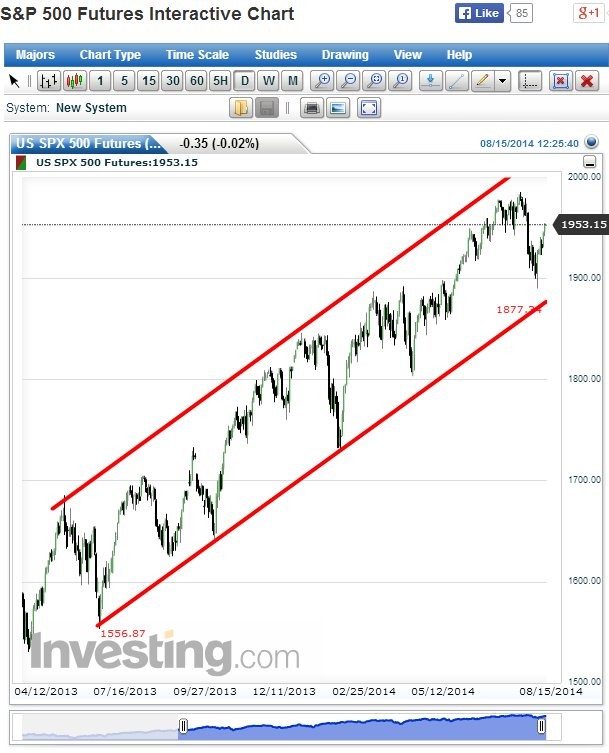An American billionaire wants to save the US economy with a betting market in New Zealand
Post on: 24 Август, 2015 No Comment

An American billionaire wants to save the US economy with a betting market in New Zealand
Don’t miss stories. Follow Vox!
Economist Scott Sumner is working to set up a market to let people bet on the future size of the US economy. The market, being set up with financial support from billionaire video game mogul Gabe Newell and others, will be based in New Zealand. And it has the potential to save the US from another Great Recession.
At least that’s the view of Sumner, who teaches at Bentley University. As I wrote in July. Sumner believes that the Fed’s conventional approach to monetary policy — manipulating interest rates in order to achieve a stable rate of inflation — was responsible for the severity of the 2008 recession.
Instead, Sumner argues, the Fed should have directly targeted the total amount of spending in the economy. He believes that if the Fed had done this in 2008, committing to spend whatever it took to keep the economy on a steady growth path, we would have had a shorter and milder recession. (You can read about Sumner’s viewpoint here .)
The value of NGDP futures markets
Scott Sumner
Right now, the Fed’s approach to monetary policy is to try to get an inflation rate close to (and usually below) 2 percent. This works well in normal situations. But in a crisis — like the one America suffered in 2008 — it can lead the Fed to under-react, leading to unnecessary economic misery.
Instead, Sumner argues that policymakers should target nominal gross domestic product (NGDP), which measures the value of all goods and services in the economy. Sumner argues that if the Fed had vowed to print as much money as it takes to keep NGDP growing at a steady rate of 4 to 5 percent, it would have prevented the severe recession we suffered in 2008 and 2009.
The question is how to make that promise credible. If you want to predict the price of oil or pork bellies a year from now, you can look at prices on the relevant futures market. There are also markets that help forecast future inflation rates, which help Fed decision-makers figure out if they’re on track to meet their 2 percent inflation target. But if the Fed wanted to try Sumner’s strategy of targeting NGDP, it wouldn’t be able to rely on the same kind of market-generated data.
Sumner has long argued that the Fed itself should run an NGDP futures market. Even if the Fed doesn’t adopt Sumner’s other policy ideas, NGDP forecasts could provide useful data to guide Fed decision-making.
But so far the Fed has ignored Sumner’s call to create one. So Sumner has decided to set up an NGDP futures market himself. And he has an unlikely ally. Gabe Newell, founder of the wildly successful video game company Valve, is evidently a longtime believer in the need for NGDP futures markets. He has pledged $20,000 to help Sumner get his project off the ground. Several other wealthy donors are also on board, which should give Sumner more than enough cash to get the experiment off the ground.
The market will operate in New Zealand to avoid strict US regulations. Rregulatory restrictions also mean that Americans won’t be allowed to participate. That could significantly limit its value as a forecasting tool, and make it unsuitable for guiding Federal Reserve policy.
Could NGDP targeting save the economy?
Yet Sumner’s project could still do a lot to raise the profile of NGDP targeting and pave the way for the eventual creation of a more robust market here in the United States. Journalists love writing about short-term market fluctuations, so the existence of realtime NGDP data could help to raise public awareness of NGDP as a macroeconomic variable. And during the next economic downturn, pundits and policymakers who favor easier money will be able to point to the New Zealand NGDP futures market as evidence that the Fed needs to do more to support the economy.
If Sumner’s market becomes popular, that could put pressure on the Fed to create a more robust market that is open to Americans. And in the long run that could be a big deal.
It’s true that an NGDP futures market isn’t strictly necessary for the Fed to switch from inflation targeting to NGDP targeting — the Fed wouldn’t have needed a futures market to tell it NGDP was below the long-term trend in 2009, for example. But a futures market should give the Fed more timely and accurate data about NGDP trends than it could get from other types of forecasts.
Using an NGDP futures market to guide monetary policy has another big advantage: it should be intuitively appealing to conservatives. Many on the right have criticized the Fed for deviating from rules-based monetary policy. People who say this usually prefer the Taylor Rule (a formula for setting interest rates based on inflation and unemployment statistics) or a gold standard. But the monetary policy Sumner envisions — in which market NGDP forecasts are used to determine how much money to print — is every bit as rules based. And Sumner’s rule has a better chance of preventing another Great Recession.














